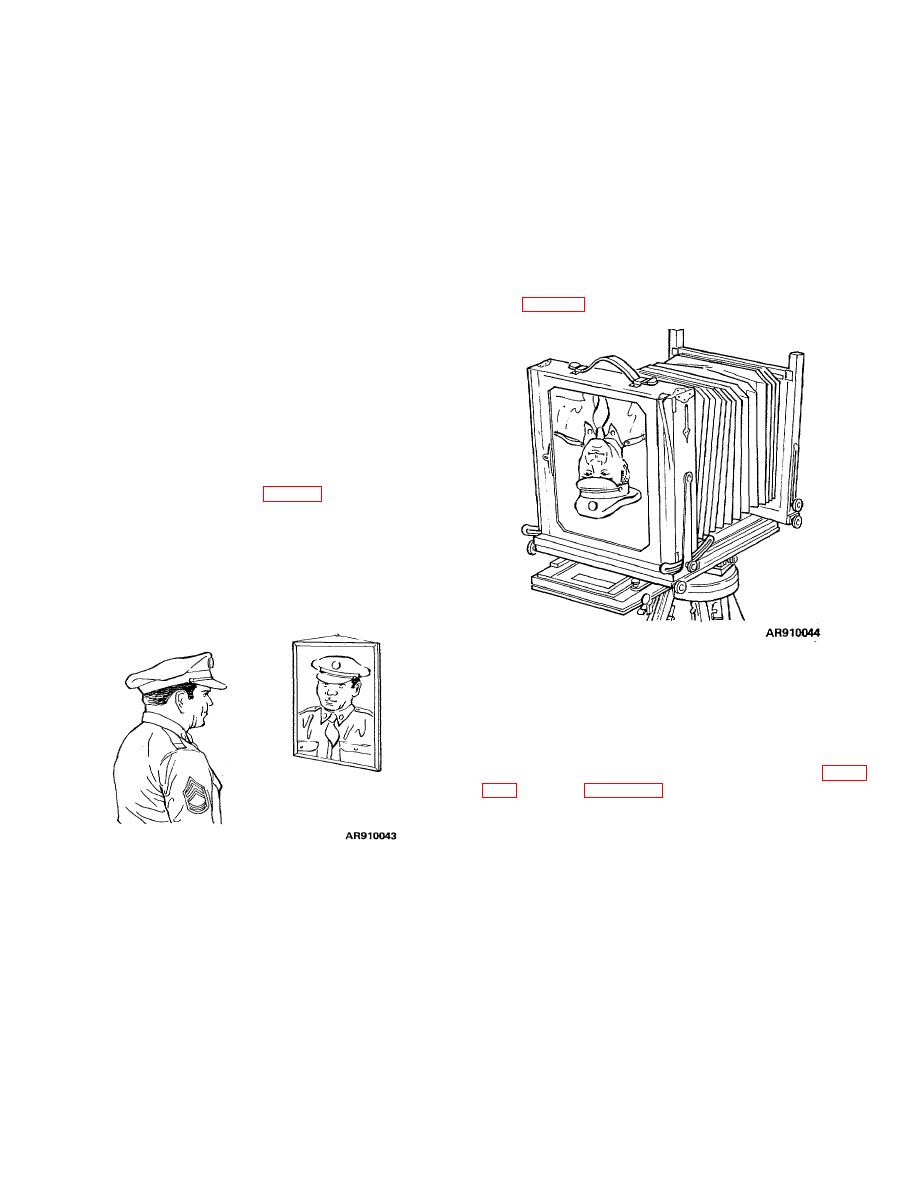 |
|||
|
|
|||
|
|
|||
| ||||||||||
|
|
 TM 9-258
b. The small critical angle of diamond accounts for
substance. The light entering the diamond is totally
reflected back and forth a great number of times before
the brilliance of a well-cut diamond. It is due to a total
emerging, producing bright multiple reflections.
internal reflection of light which occurs for a greater
variety of angles than in any other
Section IV. IMAGE FORMATION
(2) Real images. A real image actually exists.
2-18. General. In considering the principles of the
It can be thrown upon a screen. The lenses of the
formation of images by lenses, for simplicity of
human eye and the camera form real images. The real
explanation it will be assumed that perfect single lenses
image formed by a camera can be seen on the ground
are used.
glass (fig 2-38).
2-19. Classification of Images.
a. Virtual and Real Images. Two types of images
are produced by optical elements, virtual images and real
images.
(1) Virtual Images. A virtual image is so called
because it has no real existence. It exists only in the
mind and cannot be thrown upon a screen because it is
apparent only to the eyes of the observer. A familiar
example is the virtual image formed by a mirror. The
image of the person looking into the mirror appears to be
on the other side of the mirror (fig 2-37). No trace of the
image can be seen on the back of the mirror. A plane
mirror produces a virtual image resulting in an optical
illusion in which the object appears to be behind the
mirror.
Figure 2-38. Real image formed on ground glass of
camera.
b. Erect, Inverted, Normal, and Reverted Images.
When an image is reflected or refracted by optical
elements, the parts of the object may be seen as being
transposed horizontally, vertically, or both. This is
illustrated by what happens to the letter F shown in figure
Figure 2-37. Virtual image reflected by plane mirror.
2-26
|
|
Privacy Statement - Press Release - Copyright Information. - Contact Us |